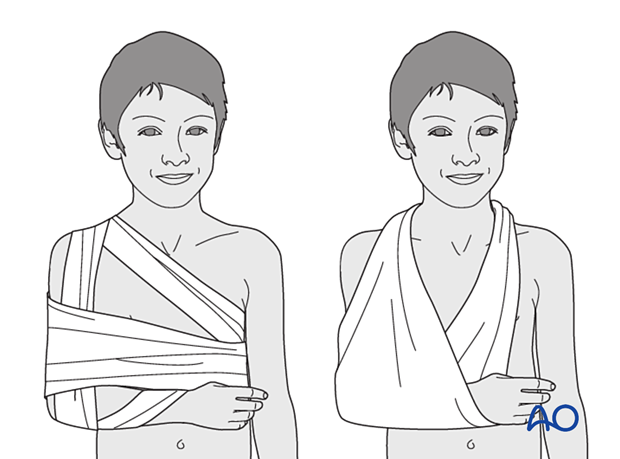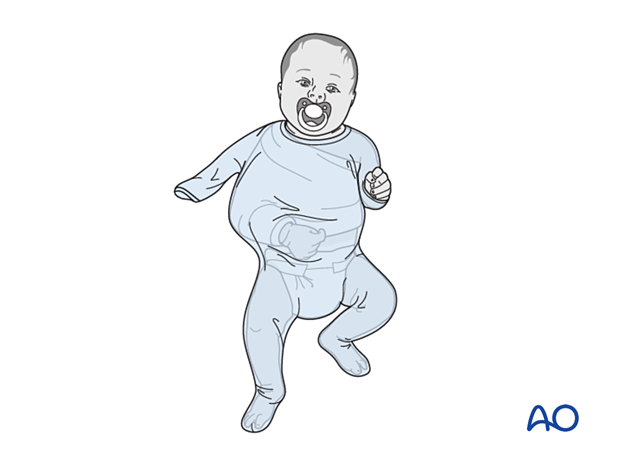Immobilization with body binder/sling
1. General considerations
Humeral shaft fractures require control of shoulder movement to increase fracture stability.
Advantages are:
- Easy to remove and reapply
- Earlier functional use of arm
- Inexpensive
Stabilization of the arm to the body can be achieved by wrapping the arm as illustrated or using commercially available devices.
This is often suitable for the initial treatment and may be followed by a brace.

Obstetric fractures are usually immobilized with the arm inside clothing or by fixation of the sleeve to the body, until the child is pain free.

AO Video
Support bandages – Gilchrist bandageIndications:
- Fracture of the proximal humerus
- Shoulder injuries
Goal:
- Stabilization of the proximal humerus and the shoulder
2. Aftercare following immobilization
Duration of immobilization
Humeral shaft fractures require 3–6 weeks of immobilization for adequate healing, depending on the age of the patient and fracture morphology.
Immobilization may be discontinued as symptoms improve.
Follow-up
AP and lateral x-rays should be taken to assess the fracture position.
Obstetric fractures do not generally require radiological surveillance.
Recovery of motion
Recovery of movement is usually rapid and rarely requires physiotherapy.
Resumption of unrestricted physical activity is a matter of judgment by the treating surgeon.
Remodeling
Remodeling is less predictable in older children and residual angulation may result in visible deformity.













